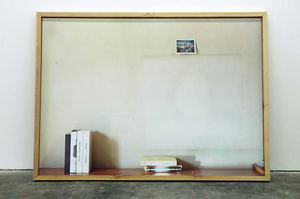This is an archive of the ArtCat Zine, 2007-2009. Please visit our new project, IDIOM.
Tracing the Index: Impossible Archives

Impossible Archives
Part 2 of Tracing the Index
5:30pm Monday 3 March 2008
Kevorkian Center, NYU ground floor library
Sullivan Street 50 Washington Sq South
Archives are never about memory. This doesn't exclude the model of the archive of course, a potentially heterogrenous set of discrete constituting documents, from its instrumentalization into those national and pan-national memory industries which seek to consolidate demographics and populations into neatly delineated groups. Aleksandr Rodchenko, in the first half of the 20th century and 4 years after Lenin's death, for instance, proposed an archive as a monument to the revolutionary intellectual's legacy. Rather than a pictorial representation, an idealized likeness of the Chairman's visage, or a monolithic sculptural representation or abstraction, Rodchenko proposed that his memory be instituted as a kind of collection of selective trace documents — newspaper clippings, photographs, bits of manuscripts, and so on. Though the proposal was never officially carried out, it serves as good a reminder as any that the model of the archive may well be the modernist structure par excellence, similar to the collage in the disparate decontextualization and implied inclusionary politics of of its member elements. Indeed the affirmative or exclusionary archive has been utilized politically by both repressive and democratic political regimes to create historical narratives of sovereignty or a right to power, void traumatic histories, and counter critical or counter-hegemonic discourse by way of a horizontal organization of information — a discursive type of data structure. The archive of the impossible, that which evades casual organization or systemic documentation is the topic of the second roundtable at NYU of Tracing the Index, a four-part series of events organized by artists Chitra Ganesh and Mariam Ghani. We might imagine such an impossible archive as a solvent to its official counterpart, a collection of "unspeakable, unutterable, censored, undocumented disappeared or disappearing materials." To think about power in the 20th century it becomes impossible then to leave unconsidered the archive and its constitutive role in such matrices. It is to be expected also that this model should come to the attention of a critical contemporary art, necessary as it may be for any serious look cast on the history of that century. This is surely evinced by the past few years of intensive production of research, texts, exhibitions, and work on the archive in and on the periphery of contemporary art venues and distribution channels.
Participating in Monday's roundtable are artists Leslie Hewitt and Martha Wilson, historian Orit Halpern, writer Tal Halpern, professor of civil rights law Ramzi Kassem, and filmmaker Althea Wasow. The panelists will take on a discussion of "the role of artists and activists as archivists of unofficial or suppressed histories; the various manifestations of archive fever; and the relationships between witnesses, testimony, memory and archives."
ZINE
HOME
TIPS / COMMENTS
CATEGORIES
CONTRIBUTORS
- Greg Afinogenov
- B. Blagojevic
- Adda Birnir
- Susannah Edelbaum
- Julie Fishkin
- Paddy Johnson
- Jessica Loudis
- Christopher Reiger
- Andrew Robinson
- Peter J. Russo
- Blythe Sheldon
- S.C.Squibb
- Hrag Vartanian
